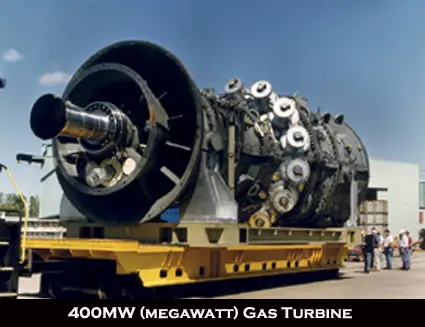 Switching to gas to produce electricity and using gas as a wedge against carbon emissions makes sense in the short term. Like coal, natural gas is a fossil fuel and is sourced from the earth, usually as methane, but sometimes as a byproduct of oil drilling. However, and unlike coal, natural gas burns cleanly, emitting no ash and almost no sulphur. When compressed to a liquid state, natural gas takes up less space, making it easier to transport on ships and store in underground tanks.
Switching to gas to produce electricity and using gas as a wedge against carbon emissions makes sense in the short term. Like coal, natural gas is a fossil fuel and is sourced from the earth, usually as methane, but sometimes as a byproduct of oil drilling. However, and unlike coal, natural gas burns cleanly, emitting no ash and almost no sulphur. When compressed to a liquid state, natural gas takes up less space, making it easier to transport on ships and store in underground tanks.
“Gas has grown from a marginal fuel consumed in regionally disconnected markets to a fuel that is transported across great distances for consumption in many different economic sectors. Increasingly, natural gas is the fuel of choice for consumers seeking its relatively low environmental impact, especially for electric power generation. As a result, world gas consumption is projected to more than double over the next three decades, rising from 23% to 28% of world total primary energy demand by 2030 and surpassing coal as the world’s number two energy source and potentially overtaking oil’s share in many large industrialized economies" (Joint Study by the Stanford Program on Energy and Sustainable Development and Rice University). In addition to using gas as a fuel by itself, the combined cycle technology gives gas a major advantage in efficiency over other fossil fuels, reflected in both economic and environmental performance.
Gas turbines can be particularly efficient, up to 60%, when waste heat from the gas turbine is recovered by a heat recovery steam generator to power a conventional steam turbine in a combined cycle configuration. They can also be run in a cogeneration configuration: the exhaust is used for space or water heating, or drives an absorption chiller for cooling or refrigeration. A cogeneration configuration can be over 90% efficient. The power turbines in the largest industrial gas turbines operate at 3,000 or 3,600 rpm to match the AC power grid frequency and to avoid the need for a reduction gearbox. Such engines require a dedicated enclosure.
Natural gas as a wedge against carbon emissions offers reductions in nitrogen oxide and greenhouse gas emissions. The gas basically eliminates the emissions of sulphur oxides and particulates, two of the most serious atmospheric pollutants. However, in studies by the International Energy Association, (IEA) it is shown that the emissions limits set by the Kyoto Protocol will require reductions in total use of electricity to reduce fossil produced greenhouse gases. This means replacement of older generating capacity with non-fossil fuel units, either renewables or nuclear, and decreasing the demand for natural gas.

Undoubtedly, gas has a relatively low carbon content of gas when compared with coal and ensures the lowest greenhouse gas emissions of all fossil-fuel based technologies. However, the IEA also suggests that there is risk of higher and more volatile gas prices towards 2030 as global gas production peaks and falls. This will obviously increase the economic risks for gas plants in the very long run. As a result, gas as a wedge against carbon emissions should only be viewed as a short-to-medium term solution in the battle against global warming.


